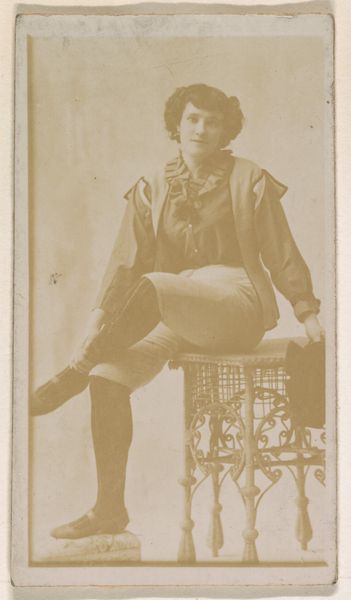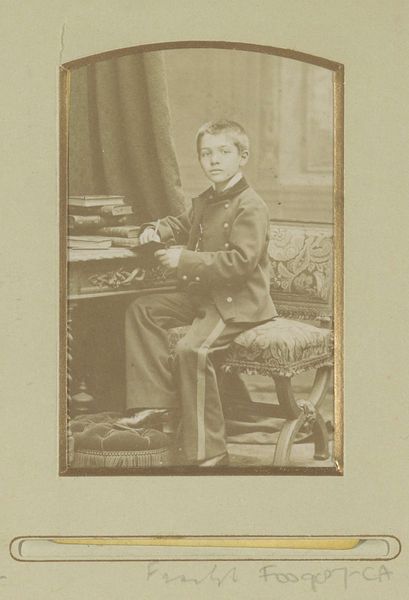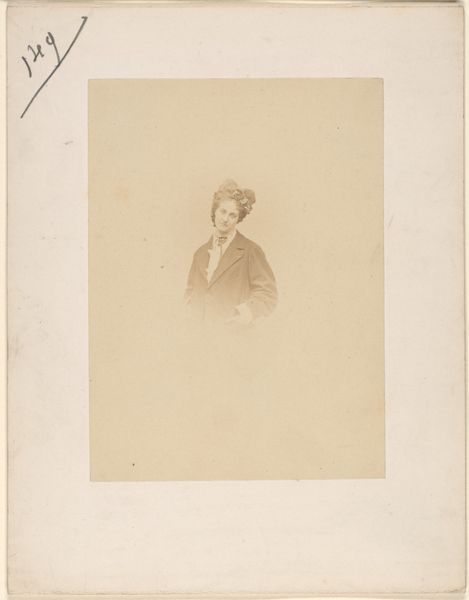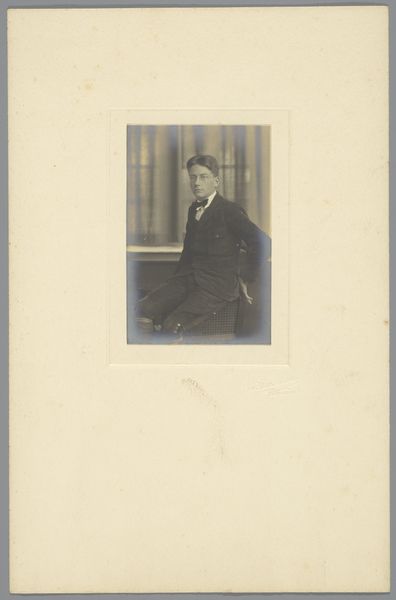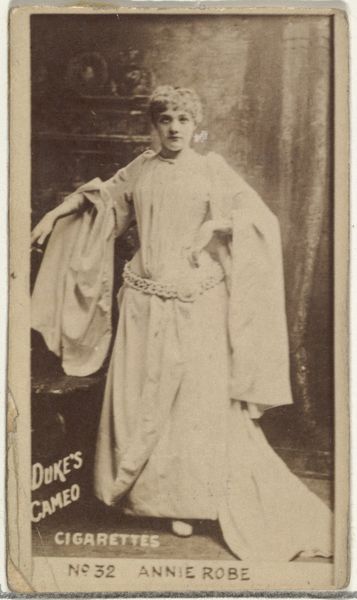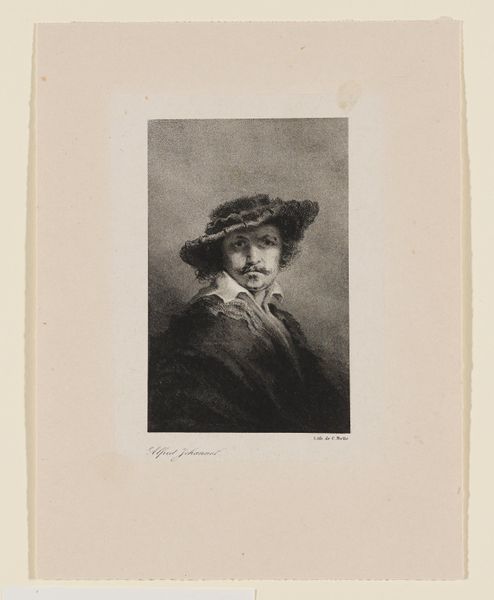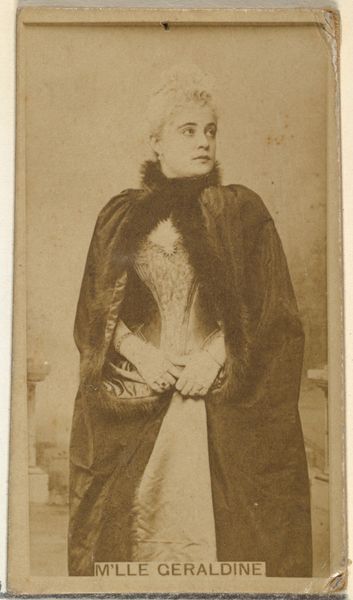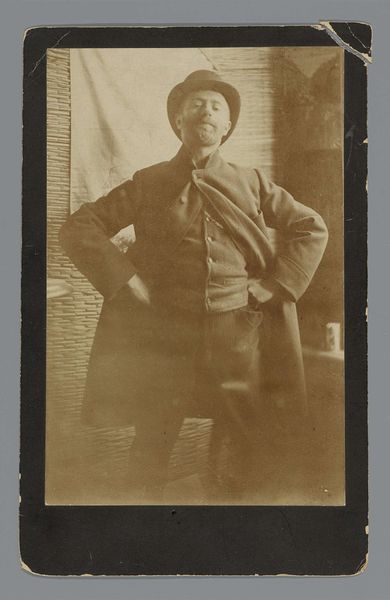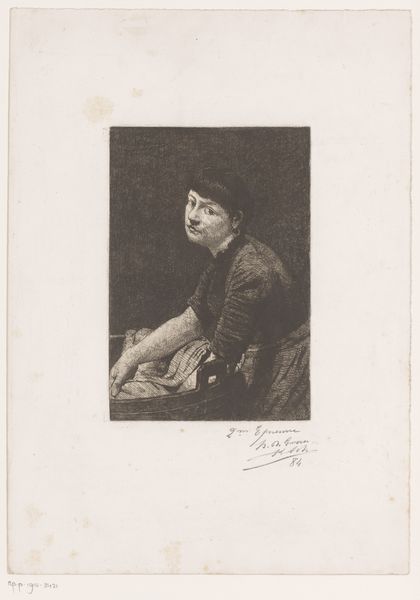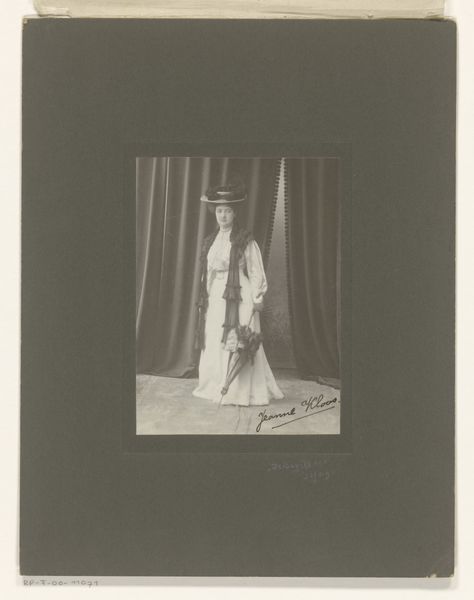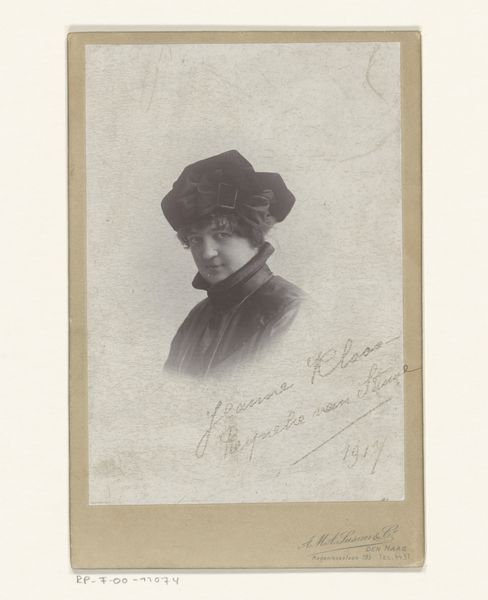
photography
#
art-deco
#
self-portrait
#
photography
Dimensions: height 170 mm, width 112 mm
Copyright: Rijks Museum: Open Domain
Curator: Looking at this sepia-toned photograph, what strikes you first? Editor: Its subdued, almost somber palette initially gives a muted impression, but I immediately see how meticulously composed the image is. The background drapery frames the figure beautifully, and there’s a lovely interplay of light and shadow across the textures of the fabric. Curator: You are spot-on. This is "Portret van Tine van der Werf verkleed als La Garçonne," created in 1929 by Jerome Studios. We're looking at a self-portrait, a key genre during that period where one often assumes performative identity through costume and setting. "La Garçonne", of course, translates as "the boyish girl". Editor: Absolutely. Notice how the gaze is directed upward, conveying a sense of defiance perhaps? The Art Deco styling also speaks to this forward momentum, a clean and sharp presentation which further solidifies a sense of power. Curator: Indeed. Post-World War I, we witnessed evolving notions of femininity. The androgynous “Garçonne” style, popularized in France, became an international symbol of the modern woman, rejecting restrictive Victorian ideals in favor of freedom, independence, and equality. It's fascinating how she reclaims patriarchal concepts through dress and demeanor. Editor: It's remarkable. There's something both elegant and quite unsettling. But, without a close visual inspection, we could miss how subtly it challenges the visual language of its time. The simplicity of form forces our eye into reading this photograph structurally and how shape can become subversive. Curator: The fact that it is a photographic self-portrait adds another layer of significance, highlighting self-representation, autonomy, and perhaps a critique of conventional portraiture. What do you make of the way they staged themselves? Editor: Given its materiality—that's a paper photograph with an attached paperboard—this would certainly not be intended for extensive viewing outside the collector's realm. Here we see how the material can become the conceptual basis and even change its potential for widespread accessibility. Curator: Thinking about it this way invites a renewed appreciation for the courage and creativity with which Tine van der Werf negotiated identity during an era of unprecedented social change. Editor: Exactly, a testament to how much we can decode when structure and meaning intertwine.
Comments
No comments
Be the first to comment and join the conversation on the ultimate creative platform.

